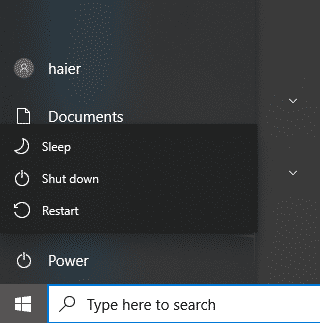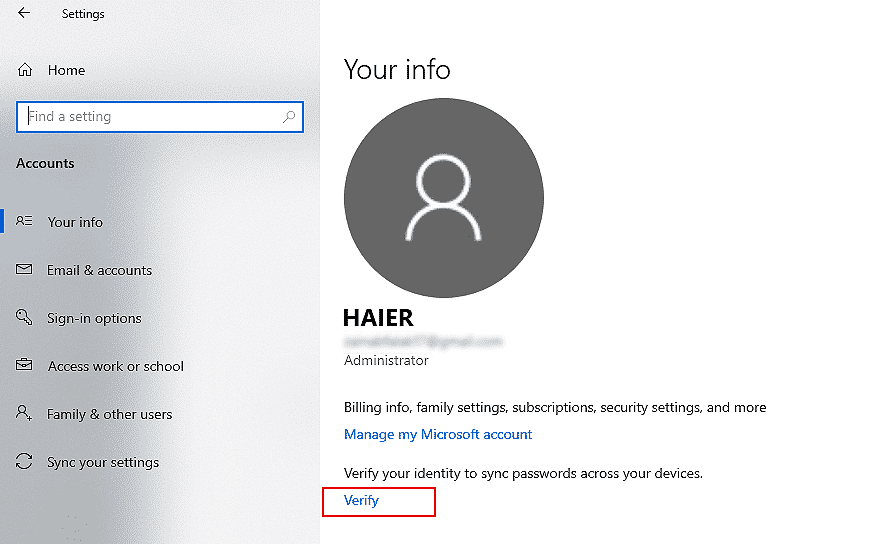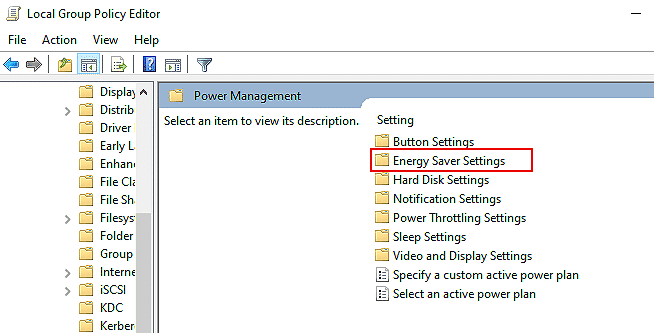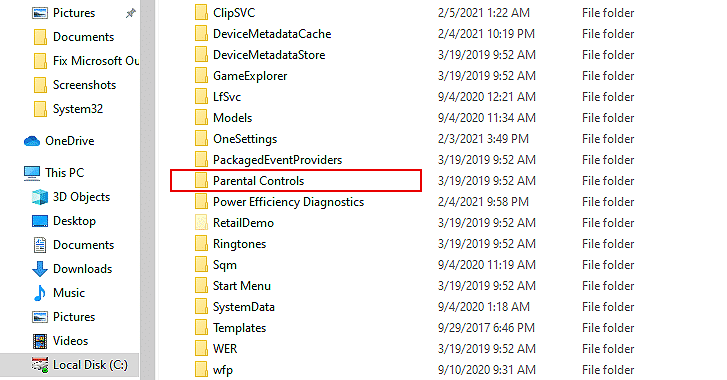MS Family Account screen time limits not working on your device?

Sometimes there is nothing better than binge-watching a crime documentary while munching on your favorite snack. Or, if you are a parent, there is no denying that YouTube videos and games distract children easily, making it easier for you to take some time off.
Whatever the case might be, deep down, we all know that excessive screen usage is bad for both mental and physical health.
For most families, the perfect solution to this problem is using family accounts. Family accounts allow the parents to check on their children’s online activities and set screen time limits.
Several users recently reported that the MS Family screen time limit is not working on the targeted devices. If you are a Microsoft Family account user and have been facing this issue lately, you are in the right place.
This guide will walk you through the process of fixing the screen time limit error in a few simple steps.
Let’s get started.
- 1. Restart Windows Device.
- 2. Remove Parental Control Settings.
- 3. Sign in on Targeted Device.
- 4. Verify and Activate Account.
- 5. Change the Account Type.
- 6. Use the Registry Editor.
- 7. Try Using CleanMyPC.
- 8. Update Windows.
1. Restart Windows Device.
Restarting your Windows device to fix an error might seem a bit old school, but it is a safe place to start. Moreover, it has worked for several users, and so we would encourage you to give it a shot too.
There are times when a temporary bug in the system causes issues within your device, and this might be the reason your MS Family account screen time limit is not working. In this case, the first thing that you should do is restart your Windows device and check if the error is resolved.
Here is how you can do it:
- Click on the Start button and select Power.
- Now click on Restart and wait for the rebooting to complete.

- Once done, check if restarting the PC resolved the error.
If a temporary bug in the system was causing the issue, restarting your device will fix the MS Family account screen time limit issue. However, if the error persists, proceed to the next method below.
2. Remove Parental Control Settings.
Another possible cause behind the MS Family screen time limit not working is the corrupt Parental Control configuration files. If these files are corrupt, they will prevent the Parental Control features from working correctly, and as a result, you will encounter errors such as the screen time issue.
Luckily, these files are temporary and can be deleted to fix the issue.
Here is all that you need to do:
- If you face the issue on your child’s device, log in to the targeted device as an administrator. You can also use the parental account to log in.
- Right-click on the Windows icon in the taskbar and click on Run.
- Type the path mentioned below in the text field and click on OK.
%ProgramData%
- Locate the Microsoft folder and click on it.
- Then search for the Windows folder and open it.
- Now locate the Parental Controls folder and delete it. If the ‘Family Safety’ feature is enabled on another device, you can copy the Parental Controls folder’s contents from there and paste it on the targeted device.
- Once done, reboot your PC and check if the MS Family account screen time limit is working fine.
If a corruption error in the Parental Controls folder was causing the issue on your PC, deleting the folder will fix it. The screen time limit on your Windows device should work fine now.
3. Sign in On the Targeted Device.
For the screen time limit to work properly, you need to make sure that the targeted device’s user has signed in with their Microsoft account on the device. If the user has signed in to the device with a local account, then the MS Family account screen time limit will not work on their device.
Here is how you can check it:
- Go to Settings and click on Accounts.
- Choose Your Info from the left panel and check if the user is signed in with their Microsoft account. If not, sign in with a Microsoft account.
- Once done, go to Sync your settings and check if the device is syncing up properly.
Once you sign in with the Microsoft account, the screen time limit will work fine on the targeted device.
4. Verify and Activate Account.
Suppose the user has already signed in with their Microsoft account on their device, and the screen time limit is still not working. In that case, there is a possibility that the Microsoft account is not verified and activated.
In this scenario, the easiest way to fix the issue is to verify and activate the Microsoft account.
Here is what you need to do:
- Go to Settings and click on Accounts.
- Choose Your Info from the left panel.
- Inside the Your Info window, select Verify under You need to verify your identity and follow the on-screen instructions to complete the process.

- Once done, check if the error is resolved.
Hopefully, verifying your Microsoft account will fix the issue on your PC.
5. Change the Account Type.
As you may already know, MS Family account limitations do not work on the administrator accounts.
If the MS Family account screen time limit is not working on the targeted device, check if your child’s account type is set to administrator. If it is, changing the type to standard or guest will resolve the issue on your PC.
Here is what you need to do:
- Login into the targeted device as an administrator and go to the Settings.
- Click on Accounts, and under Your family, click on the account that you want to change.
- Select Change account type and switch from Administrator to Standard User.
If the user of the targeted device was using the administrator account, changing the account type to ‘Standard User’ will fix the screen time limit issue on the device.
6. Use the Registry Editor.
Windows Registry is a database that contains vital information used by the operating systems and the programs. It is also a great place to perform some troubleshooting steps to fix Windows errors.
If the MS Family account screen time limit is not working, it might be because the battery saver is enabled on the targeted device. Battery savers prevent the screen time limit from working on devices.
You can solve this issue by using the Registry Editor to block users from enabling battery savers unless the battery is 15% or low.
Here is what you need to do:
- Sign in to the targeted device as an administrator.
- Type Group Policy in the search bar and click Open to launch the program.
- Now navigate to the path mentioned below.
Computer Configuration>>Administrative Templates>>System>>Power Management>> Energy Saver Settings

- Double-click on Energy Saver Battery Threshold (on Battery) and select Enabled.
- Under the Energy Saver Battery Threshold, type 15 and click OK to save the settings.
The screen time limit on your PC should work without any issues now.
However, if you cannot find the ‘Group Policy Editor’ on your system, follow the steps mentioned below:
- Type cmd in the search bar and click on Run as administrator to open elevated Command Prompt.
- Copy the command mentioned below and paste it into the Command Prompt window. Hit Enter to execute the command.
reg add HKEY_LOCAL_MACHINE\SOFTWARE\Policies\Microsoft\Power\PowerSettings\E69653CA-CF7F-4F05-AA73-CB833FA90AD4 /v DCSettingIndex /t REG_DWORD /d 15

- This command’s function is to restrict the Battery Saver only to run when the battery is below 15%. Once done, restart your PC and check if the issue is resolved.
- If you want to change this setting in the future, open Command Prompt by following the first two steps and execute the command mentioned below.
reg delete HKEY_LOCAL_MACHINE\SOFTWARE\Policies\Microsoft\Power\PowerSettings\E69653CA-CF7F-4F05-AA73-CB833FA90AD4 /v DCSettingIndex
Restricting the Battery Saver only to run when the battery is below 15% will solve your PC issue. If you reencounter the error, see the next method below.
7. Try Using CleanMyPC.
Temporary errors such as the screen time limit error can be frequently caused by the corrupt files within the system. You can eliminate these errors by simply removing the junk files, and it can be done both manually and through PC cleaners.
If you do not have enough time on your hands to spend hours cleaning the system junk, try using CleanMyPC.

Unlike the average PC cleaners who never live up to the expectations, CleanMyPC offers a large variety of services. It does not just clean the junk, but also maintains system stability, increases speed, and organizes the files, all in a single click. Moreover, it also protects your online privacy to shield you from scammers.
Install CleanMyPC and give your PC a much-needed performance boost now!
8. Update Windows.
If none of the methods mentioned above fixed the issue and the MS Family account screen time limit is still not working, try updating your Windows to the latest build. There are times when a system bug causes issues within applications, and it cannot be fixed using conventional troubleshooting steps.
Updates include critical patches to the system’s security holes, and installing the pending updates will help you fix corruption errors and bugs on your PC.
Hopefully, it will solve the screen time limit issue on your PC once and for all.
This wraps up our guide on fixing the MS Family account screen time issue. We tried to walk you through the steps in detail and hope that our troubleshooting steps helped resolve the issue. If you have questions regarding the troubleshooting methods, please let us know in the comment section below.
If this guide helped you, please share it.







